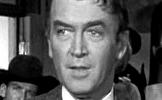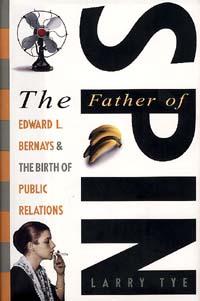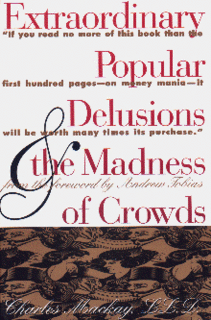
The cop's faith in his ability is broken by a portrait of Richard the Third. He then uses his skills to investigate an old mystery: was Richard really the "bunchbacked" monster who murdered the little princes in the Tower and murdered his way to the throne?
In the western film, "The Man Who Shot Liberty Valance", everyone KNOWS that Jimmy Stewart killed the outlaw and he rides to the US Senate on the basis of his heroism. When Stewart tries to expose the truth, he is told, "When choosing between the Truth and the Legend, print the Legend."

People believe what they want to believe in spite of all evidence to the contrary. They WANT Richard the Third to be a villain, though evidence suggests that the family of Henry VII framed Richard to support their own prestige. In the film, they WANT Jimmy Stewart to be a pistol packing tough guy, and not just a lawyer who abhors violence. (Neil Gaiman suggests in "1602" that any cure for Ben Grimm will always be temporary, since "Story" finds him more interesting with his affliction).
The theme in these stories speaks to the media-saturated culture of the 21st century. The common myths, superstitions and political beliefs of a society can have terrible effects on the material world. We are all too familiar with what can happen: the Salem Witch Trials, the McMartin preschool case, the Weapons of Mass Destruction that overpaid fools all KNEW were there REGARDLESS of the objective facts presented by their intelligence services. Witness the numbers who STILL perceive Bush and Cheney as warriors, in spite of their proving themselves as "chickenhawks": they themselves have admitted that both had "other priorities" when called on to fight.
The effects of mass delusion can be ridiculous as well as dangerous. Witness the time wasted in Kansas over the mechanism of evolution. When I behold a magazine cover showing the Flavor-of-the-Month Pinup boy or girl, there is a consensus on the part of New York and Los Angeles that he or she is indeed the Sexiest Thing Alive. There is no objective fact behind this assertion; they do not excrete more pheromones than others, they do not match the favored hip-to waist ratio. The masklike perfection of their features are the result of surgery or lucky genes. We ourselves might not find them attractive, but the idea that they ARE sexy is so pervasive that comedians can use their name as a shorthand phrase meaning "erotic". This is manipulating the archetype. What happens to a culture that does this over and over again?

Edward Bernays, the father of advertising and mass manipulation, changed the Victorian taboo against female smoking by distributing photographs of women of fashion and trend setters puffing away on cigarettes.
I am currently revising PANDORA'S BASEMENT, a novel that uses these themes in a "dark urban fantasy" context (ah, the market that cannot perceive a thing until we impose categories on them).
This is a space for readers of this blog-- both of you-- to post your own examples of gross distortions between popular belief and objective fact. For example:
"Everyone KNOWS That": Social Security will run out of money because people live longer than they did during the Roosevelt administration. "The number of older Americans living now is greater than anyone could have imagined in 1935." (souce: Jo Anne Barhart, current commissioner of Social Security.)
Inconvenient Facts: "The 1934 report of F.D.R.'s Commission on Economic Security, which laid the groundwork for the Social Security Act, projected that 12.7 percent of Americans would be 65 or older by the year 2000. The actual number was 12.4 percent." (sources: Social Security's official website and The New York Times 8/15/05.)
A seminal book describing these phenomena before the days of Bernays and Goebbels is "Extraordinary Popular Delusions, or, The Madness of Crowds" by Charles Mackay. Heinlein says somewhere that in the Kingdom of the Blind, the one-eyed man is in for a hell of a rough ride.
 And Gary Larson has a cartoon somewhere called "Lemming Philosopher", with one little rodent asking as the crowd plunges over a cliff: "Hey! Wait a minute! Can we talk about this first?"
And Gary Larson has a cartoon somewhere called "Lemming Philosopher", with one little rodent asking as the crowd plunges over a cliff: "Hey! Wait a minute! Can we talk about this first?" Perception-- rather than truth-- has changed the course of recent history, but harsh reality will have the last laugh.
“(You) believe that solutions emerge from your judicious study of discernible reality. That's not the way the world really works anymore. We're an empire now, and when we act, we create our own reality. And while you're studying that reality – judiciously, as you will – we'll act again, creating other new realities, which you can study too, and that's how things will sort out. We're history's actors . . . and you, all of you, will be left to just study what we do."
--Unnamed senior adviser to President G.W Bush, summer of 2002, reported by Ron Suskind
 (And some days it takes more Stones than others...) Where Mythical Bestiary meets Contemporary Culture and Chews On Its Leg Until Covered with Slobber.
(And some days it takes more Stones than others...) Where Mythical Bestiary meets Contemporary Culture and Chews On Its Leg Until Covered with Slobber.
1 comment:
There's too many popular beliefs which are gross distortions. I work changing them daily with special needs kids...."I can't do that" to "well,yes I can."
I don't know where to begin. I took logic in high school and see through too much of the baloney that is presented as news!! I'm from the generation that questions authority. I'd make a BAD soldier!
Smile, Dee Ann
Post a Comment